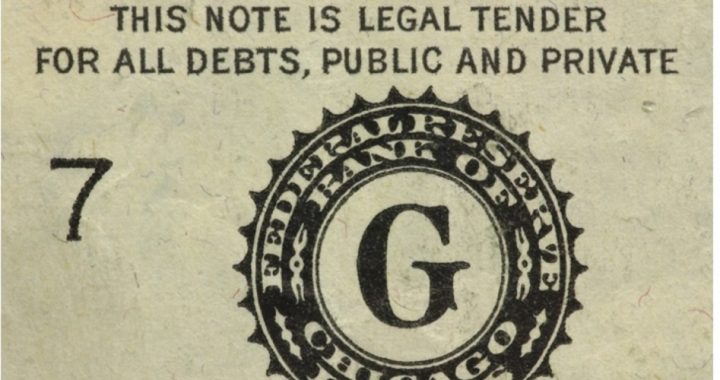
With financial talking heads now convinced that the Federal Reserve will finally increase interest rates as a result of the record-setting job openings report, few are asking about the “ripple effect” those increases might mean for individuals, for the auto and the housing industry, for companies and corporations, and, most importantly, for the debt-laden federal government.
If and when the fed announces upcoming interest-rate increases, in the short run, individuals might be tempted to accelerate their buying decision on cars and houses to take advantage of low rates before increases start flowing through to lenders in those sectors. In the longer run, those with adjustable-rate mortgages and large credit-card balances may find themselves strapped just to keep up.
Corporations that have taken advantage of essentially free money (interest is the cost of money, and rates have been close to zero for years, thanks to the Fed’s “zero interest rate policy”) to expand, to buy back their stock, and to increase dividends to shareholders will likely be far less generous in their capital expenditures and in their offerings. Their pullback is likely to rein in the over-priced stock market, with the possibility that the current volatility could turn nasty, and costly, to investors.
Those corporations, which in the aggregate have an estimated $4 trillion in debt maturing over the next five years, will find themselves faced with higher interest costs, and some, especially in the energy sector, will be faced with demands to pay back what they owe.
In the first half of 2015, those companies sporting “investment grade” ratings have issued 50 percent more debt than they did compared to a year ago, while those with “junk” ratings have been almost equally aggressive, issuing bonds at a rate 20 percent ahead of a year ago.
Those ratings are likely to start declining as reality begins to set in: Those with strong balance sheets at the start of 2015 will suffer downgrades from the credit rating agencies as their debt-to-asset ratios increase. Those with weak balance sheets are likely to be challenged just to stay in business in a rising interest-rate environment. Both Moody’s and Standard & Poor’s are warning that defaults are likely to increase in the coming years. In fact, analysts at S&P are already warning that defaults by those issuing junk bonds will be twice this year what they were last year. Moody’s list of “junk” or “speculative” ratings just exceeded 200 for the first time in five years.
In addition to the energy sector, the healthcare and pharmaceuticals sectors are likely to suffer as well, hangovers from the recent binge of takeovers, mergers, and acquisitions largely financed with cheap money.
But the biggest and most painful adjustment to the new higher interest environment will be faced by the U.S. Treasury Department. With outstanding indebtedness approaching $19 trillion, a small increase in interest rates will have an enormous, and negative, impact on the federal budget. A year ago the Congressional Budget Office (CBO) noted that in 2014 the government paid $233 billion in interest, but by 2024 that number would skyrocket to $880 billion.
But that estimate was based on the assumption that interest rates would remain low for the foreseeable future. That was then. This is now. An updated CBO report released on Tuesday projected much higher deficits and the national debt doubling as a share of the country’s economic output by 2040 if nothing else changes.
Put another way, according to the CBO, to keep the national debt ratio to gross domestic product the same over time, taxes would have to be increased or spending cut by six percent each year for the next 10 years.
All of this is the delayed consequences of that zero-interest-rate policy the Fed has been following since the early 2000s:
• Conservative investors seeking income have been taking on greater risks to get higher returns;
• Low interest rates have led to massive price inflation on nearly everything, ranging from stocks and bonds to works of art and real estate;
• Interest rates that are below market lead to asset price bubbles, such as those seen imploding in China;
• Human behavior changes when thrift is no longer rewarded but replaced with the instant gratification “spend it now” philosophy;
• It is increasingly difficult to create the capital that an economy dependent upon it needs;
• The importance of paper money as a store of value decreases;
• Incentives for fiscal discipline decline;
• Low interest rates hinder the market from clearing away companies and other financial institutions that otherwise wouldn’t be able to operate profitably; and
• When governments borrow using newly created money, that money is not uniformly distributed across the economy but instead rewards “early” receivers to the disadvantage of the “later” receivers, thus facilitating a transfer of wealth that otherwise wouldn’t take place.
As Ludwig von Mises noted in 1922:
But an increase in the quantity of money and fiduciary media will not enrich the world.…
Expansion of circulation credit does lead to a boom at first, it is true, but sooner or later this boom is bound to crash and bring about a new depression. Only apparent and temporary relief can be won by tricks of banking and currency.
In the long run they must lead to an all the more profound catastrophe.
History might record that the catastrophe began simply with a record-breaking jobs openings report that triggered the long-anticipated increase in interest rates by the Fed.
A graduate of an Ivy League school and a former investment advisor, Bob is a regular contributor to The New American magazine and blogs frequently at www.LightFromTheRight.com, primarily on economics and politics.



